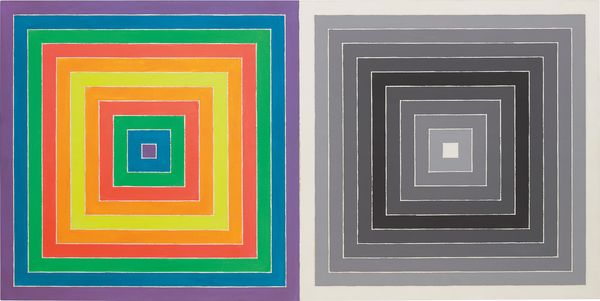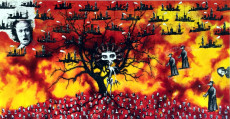
Fake. As you

Do you prefer oil or acrylic?
What if it's all about making beautiful flat tints?
Fortunately, this question is not the only one addressed in the series of articles devoted to "flat painting" in Art Press Flat painting? Yes, it's the ennobled equivalent of flat design, which has been sweeping through the graphic arts in recent years. Street art included. The whole pictorial programme of the genre is contained in its name. We work exclusively in flat tints, systematically forgetting relief and shadows.
Like Matisse?
That's not quite the point. The intention here is much more figurative. But yes, nevertheless. This reference is not foreign to the Israeli painter Guy Yanai, for example. He sees the advent of flat painting as a consequence of our transition to the screen civilisation. Between smartphones and computers. So it is not the painting that is flat but the world it portrays. Our world today. Flat. Galileo notwithstanding.
 |
But how does one come to strive for such simplicity? To go as far as the abstract minimalism of a Franck Stella. It takes a lot of time and human effort to achieve a perfectly geometrical result that a modern machine can achieve in a few minutes. |
In his article, which is anything but flat, Richard Leydier dwells at length on the work and also on the life of a pioneer of the genre: Emanuel Proweller. Here we see how far he has come, the multiple reversals between figurative and abstract, the changes in technique that would no doubt be perceived today as signs of weakness. But this was called an artist who was searching for himself. That is to say: an artist who is looking for what he is an artist for. An artist who is looking for what form of art will make him an artist. Here: flat painting.
Let's face it. Here we have paintings that openly tell us that we are flat. At the same time, they show us a very infantilizing world of comics simplified to the point of idealization. Nostalgic teenagers who have not aged well and who are playing at being the generation of Mum and Dad? Of course, the relationship between comics and painting has little to do here with the giant, gentle comix boxes of Roy Lichtenstein. The tone is deliberately more grating.
 |
Joan Cornella's universe, remarkable among others, takes us to a dimension far removed from the sole interrogative sacredness of the 8th art. On framed canvas and exhibited in galleries. |
But how does one come to strive for such simplicity? To go as far as the abstract minimalism of a Franck Stella. It takes a lot of time and human effort to achieve a perfectly geometrical result that a modern machine can achieve in a few minutes.It seems, on the contrary, that painting simplifies its art here in order to speak to us better. To better speak to us about art. And not just to show us that beautiful paintings can be made with paint originally designed to cover car bodies and aircraft fuselages.
How should we take the Handke-like insult when Joan Cornella has a potted plant say in a box: "I'm fake. Like you'? Logically, this means that the you is fake before the I. But we decode the opposite. We are told that the plant is fake. And so are we. Including the human being standing next to this botanical rapper. The label on the pot immediately puts him in the same category as us. Fake. And yet the plant feels the need to point out that it is fake. Even though it is made of the same material as him: flat paint. A priori.
This mechanism would not work in the same way if we discovered it as a square among the pages of a comic book. The insult would be indirect. Why is it so different when a painting is reduced to a comic book or a drawing on Illustrator, the all-time champion of flat tints?
Because it reminds us that in these flat paintings we see the image of the world we give to painters.
Illustrations:
- Emanuel Proweller 1918-1981 - Bathers
- Joan Cornella - You make me sick - 2019
- Franck Stella - The Drive to make art - 1967





































































